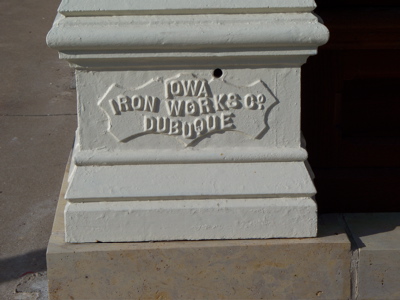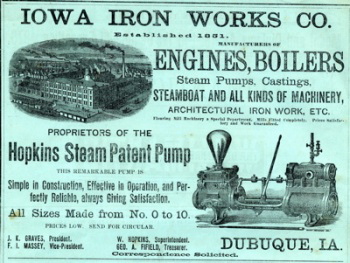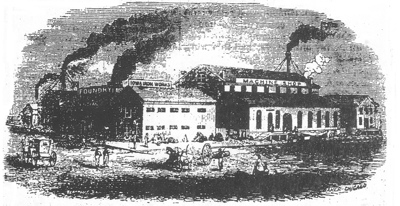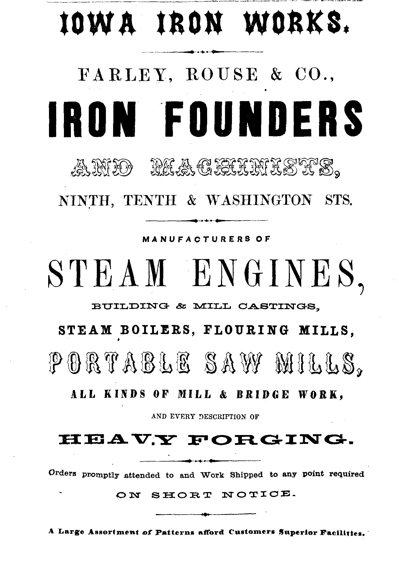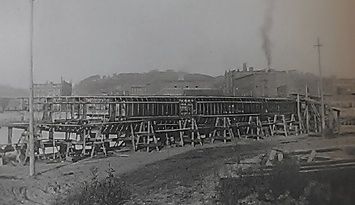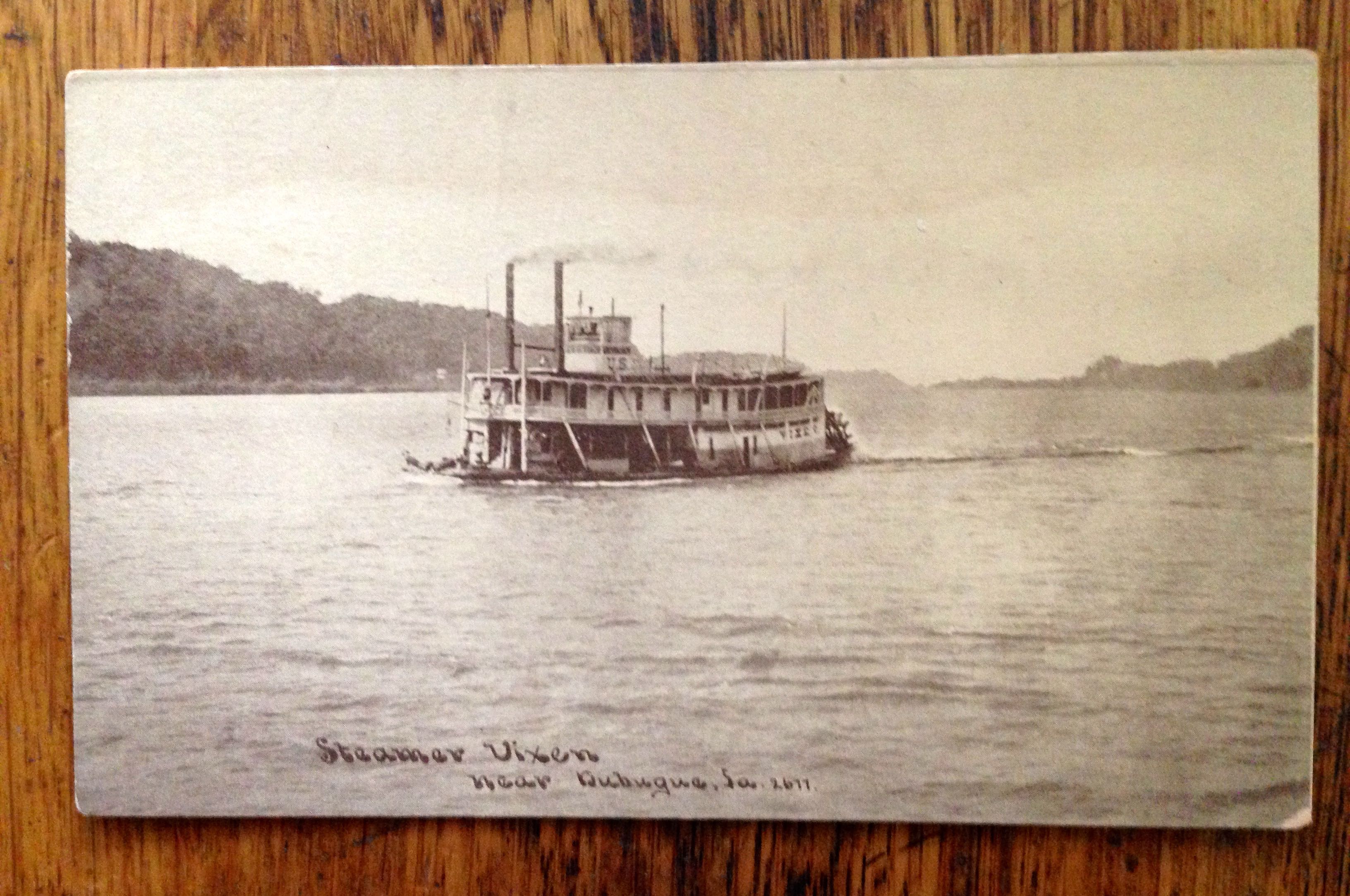Encyclopedia Dubuque
"Encyclopedia Dubuque is the online authority for all things Dubuque, written by the people who know the city best.”
Marshall Cohen—researcher and producer, CNN
Affiliated with the Local History Network of the State Historical Society of Iowa, and the Iowa Museum Association.
IOWA IRON WORKS: Difference between revisions
No edit summary |
No edit summary |
||
| Line 25: | Line 25: | ||
It was widely believed for a time in May 1891 that the company would relocate to St. Louis. Most of the business done by the company was for businesses south of St. Louis. Relocation would make transportation of the products cheaper. Working against the move was the fact that company officials had already purchased more land in Dubuque with the intent of building a larger plant. (9) | It was widely believed for a time in May 1891 that the company would relocate to St. Louis. Most of the business done by the company was for businesses south of St. Louis. Relocation would make transportation of the products cheaper. Working against the move was the fact that company officials had already purchased more land in Dubuque with the intent of building a larger plant. (9) | ||
In 1891 the Iowa Iron Works built for the government the torpedo boat Dubuque at a cost of $113,500; it was 150 feet long, 14 feet wide and 6 high; it was modeled after the | In 1891 the Iowa Iron Works built for the government the torpedo boat Dubuque at a cost of $113,500; it was 150 feet long, 14 feet wide and 6 high; it was modeled after the Cushing. The contract provided that if the boat could make more than twenty-eight knots per hour the contractors were to receive a bonus of fifty-six thousand dollars. The snag-boat James B. McPherson was built by the company the same year; it was 175 feet long. (10) | ||
Boat construction techniques improved, but the nature of the [[MISSISSIPPI RIVER]] continued to determine production deadlines in 1895. In April, the revenue cutter "William Windom" had its boilers and engines installed, but its launch depended on "the caprices of the father of waters, and will be delayed until the river becomes more than a creek." (11) | Boat construction techniques improved, but the nature of the [[MISSISSIPPI RIVER]] continued to determine production deadlines in 1895. In April, the revenue cutter "William Windom" had its boilers and engines installed, but its launch depended on "the caprices of the father of waters, and will be delayed until the river becomes more than a creek." (11) | ||
Revision as of 22:37, 20 September 2016
IOWA IRON WORKS. Major participant in Dubuque's BOAT BUILDING. The firm of Rouse, Dean & Company, an iron foundry and machine shop, was established in March 1852 on the corner of Ninth and Washington STREETS. It later became known as Rouse & Dean. (1) The firm of Rouse and Dean was dissolved with the retirement of H. Rouse. C.B. Dean, William Hopkins, and J. McMurchy carried on business as Dean, Hopkins, & McMurchy. This firm became the Iowa Iron Works.
The Iowa Iron Works employed sixty men in the manufacture of movable and stationary engines, heavy steamboat work castings, and columns for buildings. The workforce earned about $3,000 per month and the sales of the company reached $75,000 annually.
In 1870 the first keel was laid for an iron vessel manufactured in Dubuque. The Iowa Iron Works, the vessel's manufacturer, named this steamboat the "Clyde," for the home in Scotland of William HOPKINS, a builder of ironclads during the CIVIL WAR and master mechanic. The company gained national attention for its construction. (2) The 96-foot-long Clyde was the second steel-hull vessel manufactured in the United States. The boat was still in operation in 1930. (3)
In 1871 the Iowa Iron Works constructed the Dubuque Marine Ways, the largest boatyard of its kind north of St. Louis and considered the best on the Mississippi River, at EAGLE POINT. (4) Iron and steel, supplied by its foundry on 9th and Washington STREETS, were carried to the river for assembly during the thirty-seven-year life of the business.
"Shoal water propellers," designed by John Dowler of the Iowa Iron Works, saved fuel and allowed boats to pass through very shallow water. Pioneering the use of these iron propellers in 1872, the Iowa Iron Works mounted them above the water line on the boat's stem. The first boat fitted with them was the "J. G. Chapman," a steamer built for the lumber trade. Reaction to the device, dubbed "Dowler's Humbug," was generally negative.
In 1882 the company began to build the "featherwing wheel," which entered the water straight and left it straight; it was first put in the steamboat "Vixen" and proved a success. The same year the company moved its manufacturing site to the ICE HARBOR. (5)
Iowa Iron Works of Dubuque constructed craft for every use. The King of Siam ordered an iron yacht that was delivered to him in 1876. The "Queen" was launched in 1884 for excursions on northwest Iowa's Lake Okoboji and was still in use through the 1960s.
The "J. K. Graves," launched in 1885 by the Iowa Iron Works in cooperation with the DIAMOND JO LINE, was a giant raft-boat used to push rafts of logs to the mills. (6) Steel-hulled packets for carrying freight and passengers included the "Cherokee," the company's first boat of this type. The "Cherokee" boasted electric lights and the capability of carrying up to one thousand passengers. Constructing the "Ferdinand Herold" required 125 workers and cost $80,000. Railroad ferries with track laid on the deck were constructed to transport trains across the Mississippi where bridges were temporarily out of service.
Previous to the spring of 1886 the Iowa Iron Works had confined its boat work principally to iron hulls, but at that date it established a general shipbuilding department. (7) By 1890 Dubuque had become a great center for the construction of steel hulls. The Ferdinand Herold, which was launched late in July, 1890, was the twenty-second iron and steel craft sent out by the Iowa Iron Works; the Clyde was the first, in 1870. (8)
It was widely believed for a time in May 1891 that the company would relocate to St. Louis. Most of the business done by the company was for businesses south of St. Louis. Relocation would make transportation of the products cheaper. Working against the move was the fact that company officials had already purchased more land in Dubuque with the intent of building a larger plant. (9)
In 1891 the Iowa Iron Works built for the government the torpedo boat Dubuque at a cost of $113,500; it was 150 feet long, 14 feet wide and 6 high; it was modeled after the Cushing. The contract provided that if the boat could make more than twenty-eight knots per hour the contractors were to receive a bonus of fifty-six thousand dollars. The snag-boat James B. McPherson was built by the company the same year; it was 175 feet long. (10)
Boat construction techniques improved, but the nature of the MISSISSIPPI RIVER continued to determine production deadlines in 1895. In April, the revenue cutter "William Windom" had its boilers and engines installed, but its launch depended on "the caprices of the father of waters, and will be delayed until the river becomes more than a creek." (11)
By 1898 the Iowa Iron Works had built or partly built over one hundred boats. In 1898 this company launched two large iron hulls in the ice harbor. One was a transfer boat, 303 feet long, and was No. 43 of its class built here. Seven other boats were under construction at the time. About this time the Iowa Iron Works pay roll was about $11,000 per month. In fourteen months ending June, 1899, the company paid out over $400,000 for labor and material and had about 230 men on the pay roll. (12)
Concern about the condition of the U.S. Navy led to Congressional calls for modernization at the end of the nineteenth century. In 1891 the Iowa Iron Works received the contract to build Torpedo Boat No.2. (13) Named the "Ericsson," the boat was outfitted with state-of-the-art equipment. During trial runs, a failed shaft on a vessel resulted in a lawsuit levying a $17,000.00 fine on the company and temporarily closing the facility. This led Dubuque resident, U.S. Senator William Boyd ALLISON to attach an amendment to a Navy Appropriations bill repaying the Iowa Iron Works. (14)
In 1901 a contract was signed for the construction of the "SPRAGUE," the largest steam stern wheel towboat in the history of the Mississippi. Despite the death in 1902 of William Hopkins, the year proved the company's best with the Sprague nearly completed and the keel laid for the "Pelican," an enormous transfer steamboat.
In 1904 the repayment arranged by Senator Allison was used as capitol to reorganize the company under the the new name--DUBUQUE BOAT AND BOILER WORKS. (15)
Boats Constructed by the Iowa Iron Works (16)
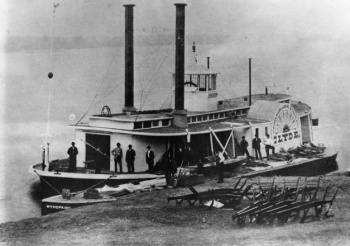
W.M. Hopkins 1871

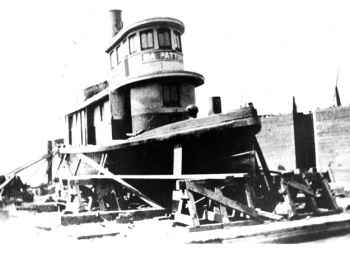
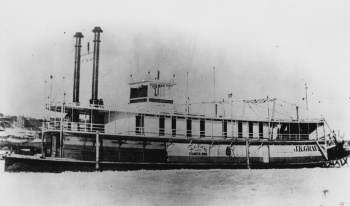
Jeanne Hopkins 1888
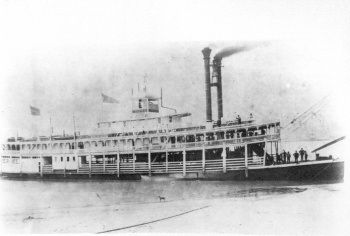
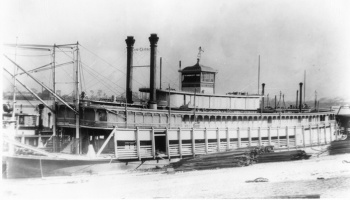
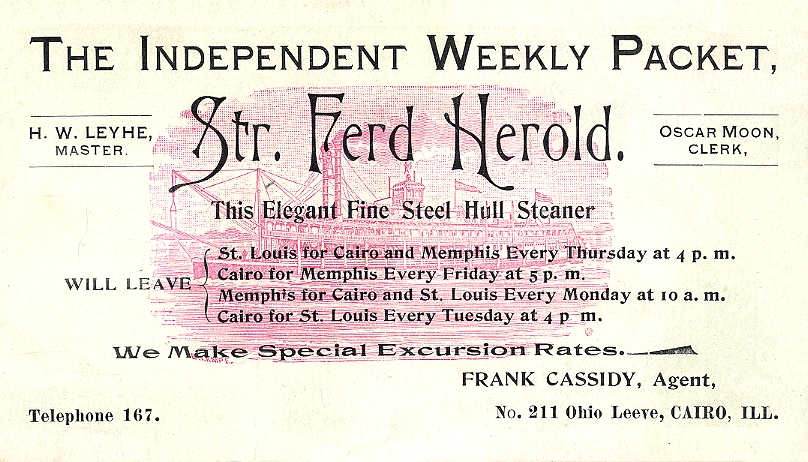
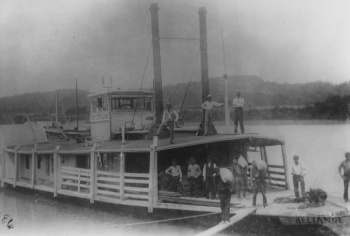
Dubuque 1891
Joy Patton 1891
James B. McPherson 1891
Chancy Lamb 1892 Built for the Lamb Company of Clinton as a river tow
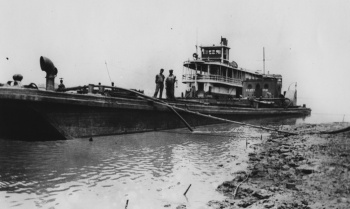
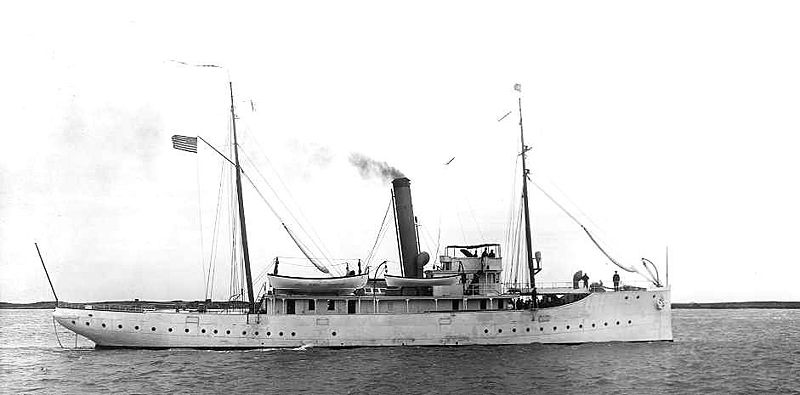
Charles H. Organ 1897

William K. Kavanaugh 1898
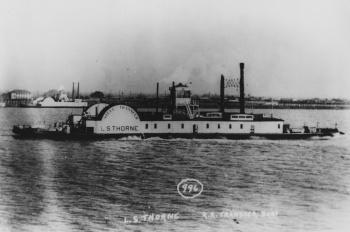
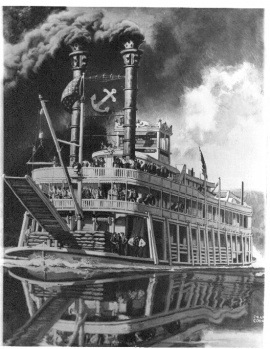
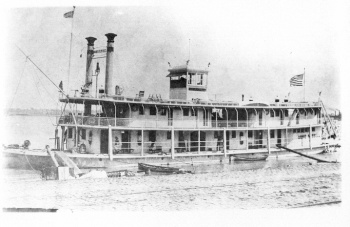
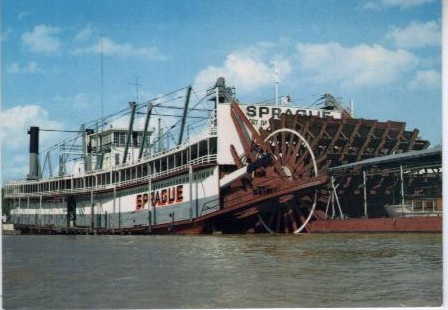

Robert E. Carr 1903
The 1858-1859 Dubuque City Directory listed Washington between 9th and 10th as the company address.
The 1880 through 1890-91 Dubuque City Directory listed the company at the northeast corner of 9th and Washington.
---
Source:
1. Ship Building History.com Online: http://shipbuildinghistory.com/history/shipyards/5small/inactive/dubuque.htm
2. Tschirgi, Marie. "Large Boats at Built in Dubuque," Telegraph Herald and Times Journal, Apr. 30, 1930, p. 21. Online: http://news.google.com/newspapers?id=DbBFAAAAIBAJ&sjid=Pb0MAAAAIBAJ&pg=4662,5194645&dq=dubuque+boat+and+boiler+works&hl=en
3. Oldt, Franklin History of Dubuque County, Iowa. Online: http://www.ebooksread.com/authors-eng/franklin-t-oldt/history-of-dubuque-county-iowa-being-a-general-survey-of-dubuque-county-histor-tdl/page-27-history-of-dubuque-county-iowa-being-a-general-survey-of-dubuque-county-histor-tdl.shtml
4. Ibid.
6. Ibid.
7. Oldt. The History of Dubuque County, Iowa. Online: http://www.ebooksread.com/authors-eng/franklin-t-oldt/history-of-dubuque-county-iowa-being-a-general-survey-of-dubuque-county-histor-tdl/page-27-history-of-dubuque-county-iowa-being-a-general-survey-of-dubuque-county-histor-tdl.shtml
8. Ibid.
9. "The Iowa Iron Works," Dubuque Daily Herald, May 16, 1891, p. 4. Online: https://news.google.com/newspapers?nid=_OG5zn83XeQC&dat=18910516&printsec=frontpage&hl=en
10. Oldt.
11. "Ready to Launch," Dubuque Sunday Herald, April 14, 1895, p. 3
12. Oldt. p. 27
13. Moeller, Hubert L. "Two Iowa Naval Boats," The Des Moines Register, April 22, 1935
14. Steamboats.org. Online: http://www.steamboats.org/history-education/dubuque-built-diesel-excursion-boats.html
15. Ibid.
16. Ship Building History.com


